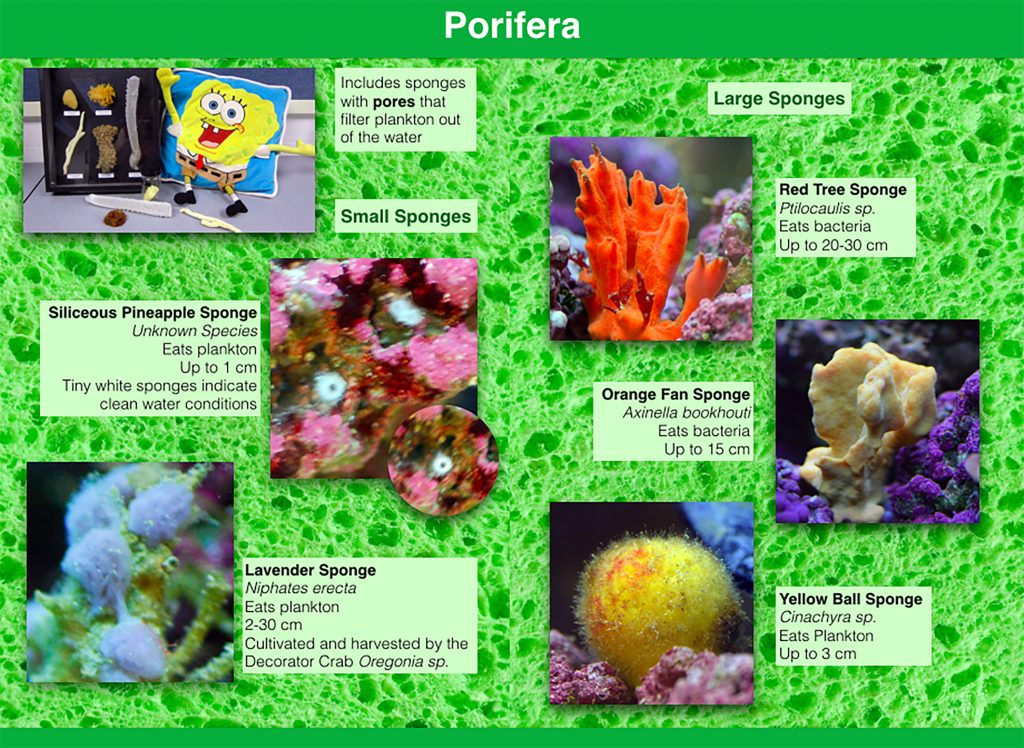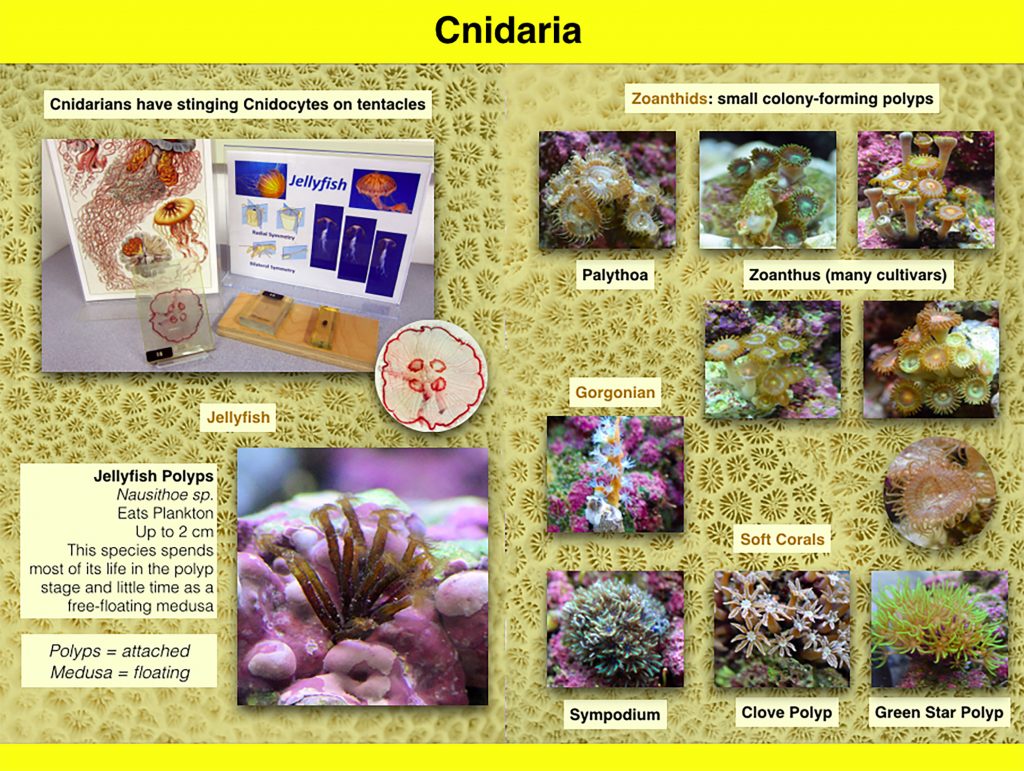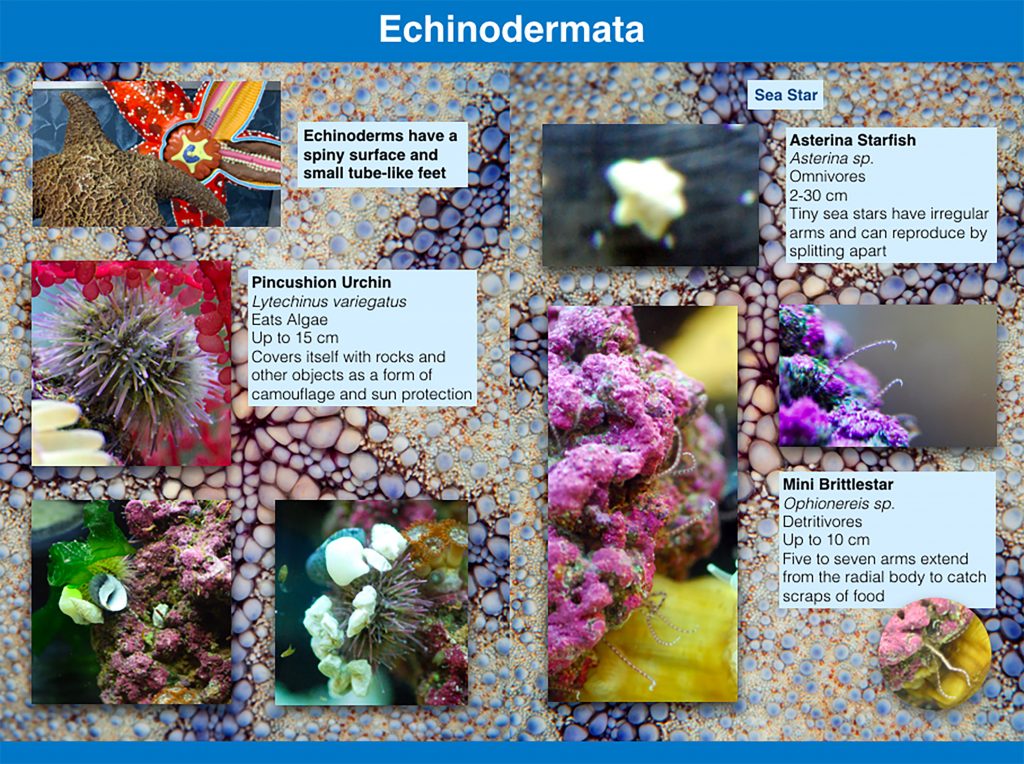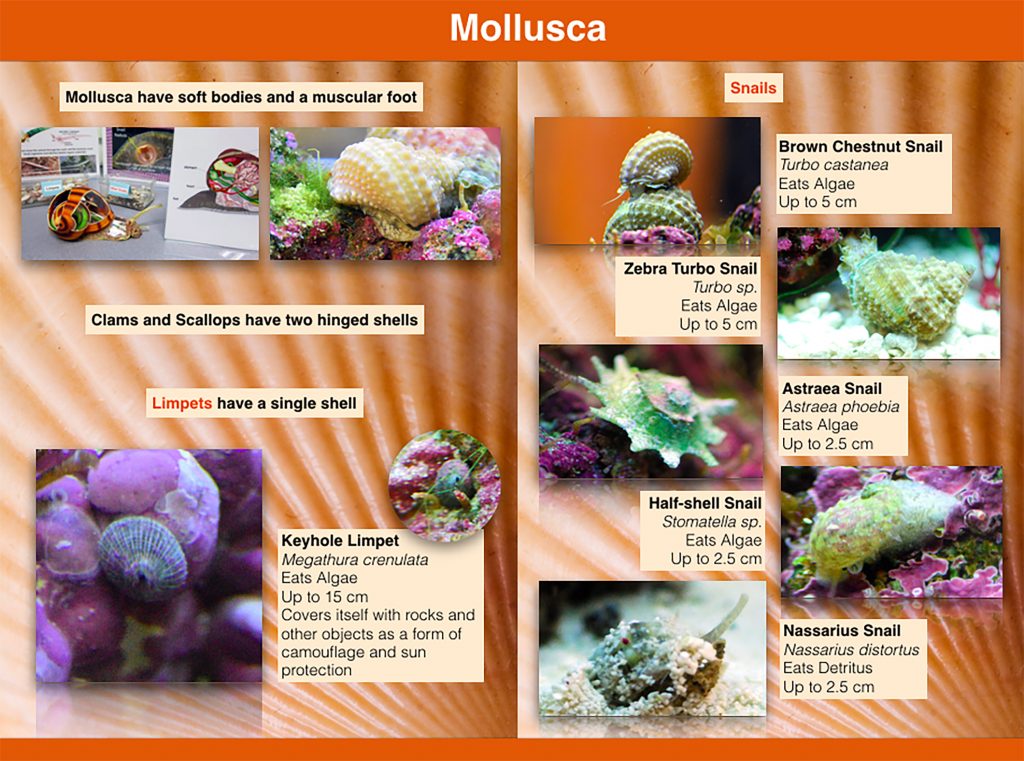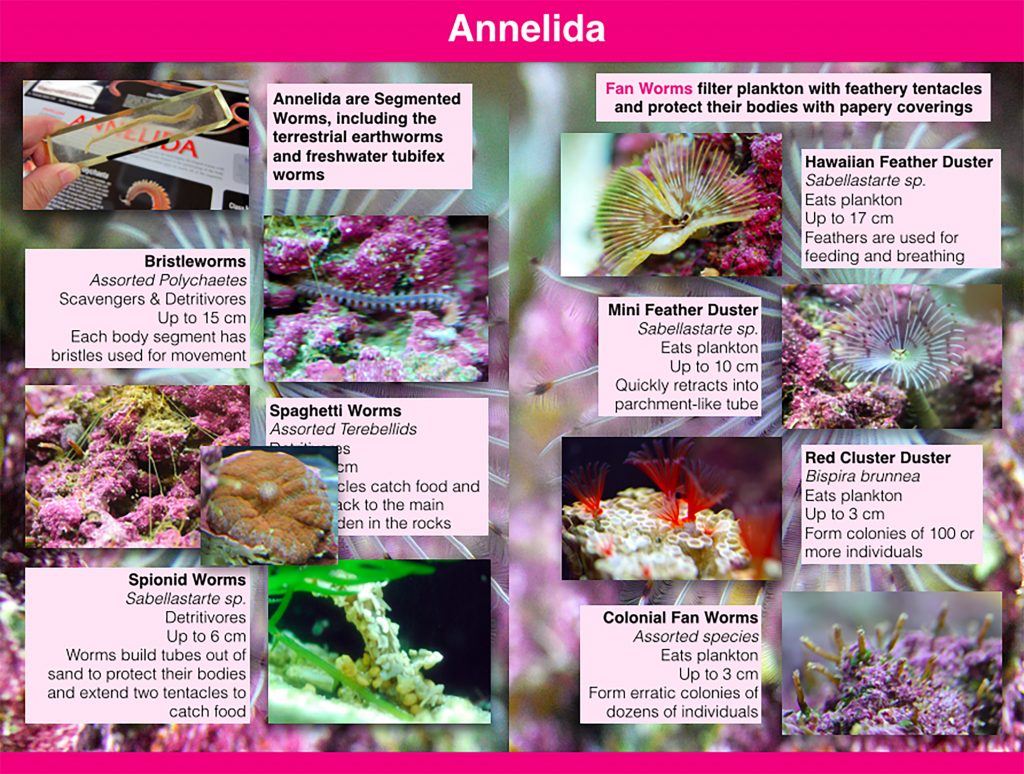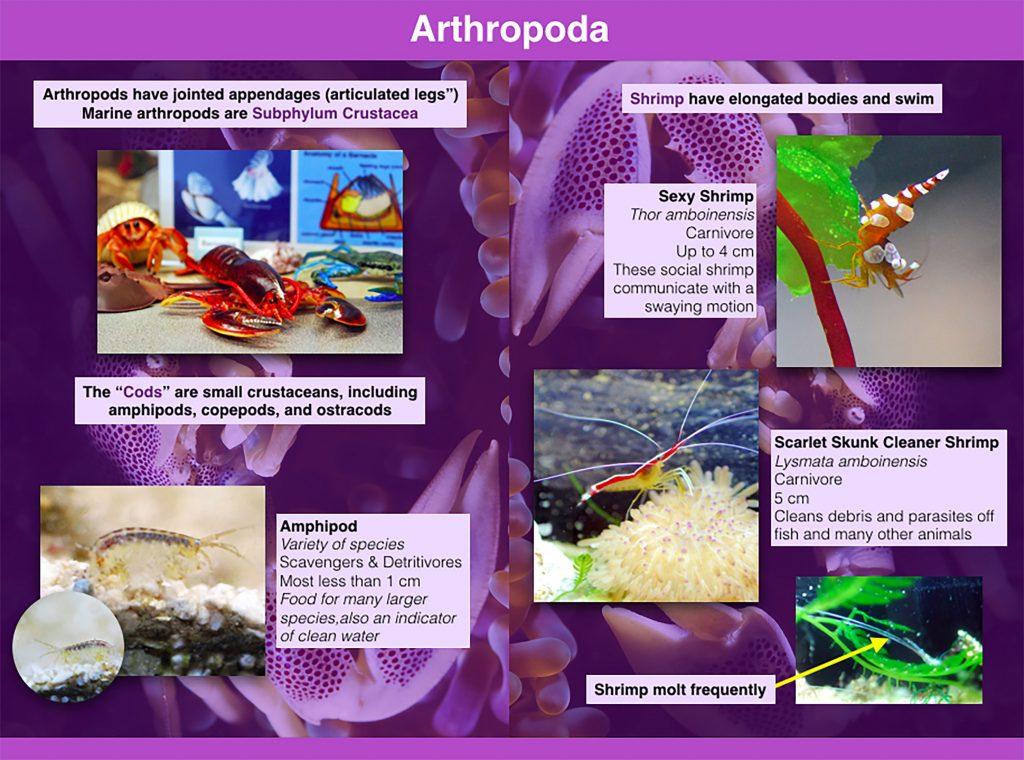
Marine Invertebrates Unique & Complex Animals

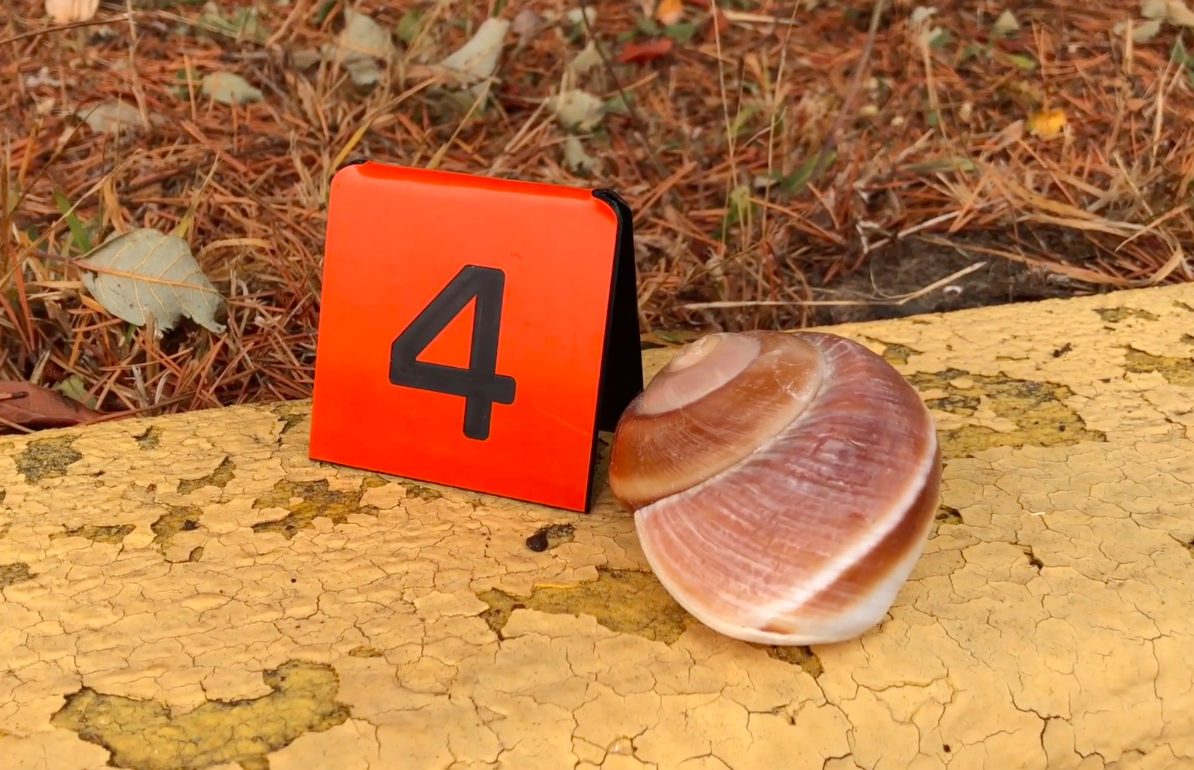
Marine Invertebrates Objectives
-
List examples of organisms in several marine invertebrate phyla, including their distinct structures and behaviors.
-
Summarize the structural characteristics, representative organisms, and ecosystem significance of cnidarian species.
Whether you are exploring a tide pool along the coast, snorkeling in a coral reef, or setting up a saltwater aquarium at home, marine invertebrates are the diverse and attention-grabbing animals of ocean habitats.
This video introduces marine invertebrates you are likely to encounter.
Select the tab of each invertebrate phylum for additional information
Poriferans
Phylum Porifera
Porifera (pronounce: pore-if-er-a) are commonly called the sponges. These are structurally simple animals with no distinct organs. Porifera means “pore-bearing,” and the pores are openings through which water and the microorganisms they eat enter, and wastes leave.
One of the habitats that features easily accessible marine invertebrates are tidal pools: rocky areas along coasts that hold water and organisms at low tide.
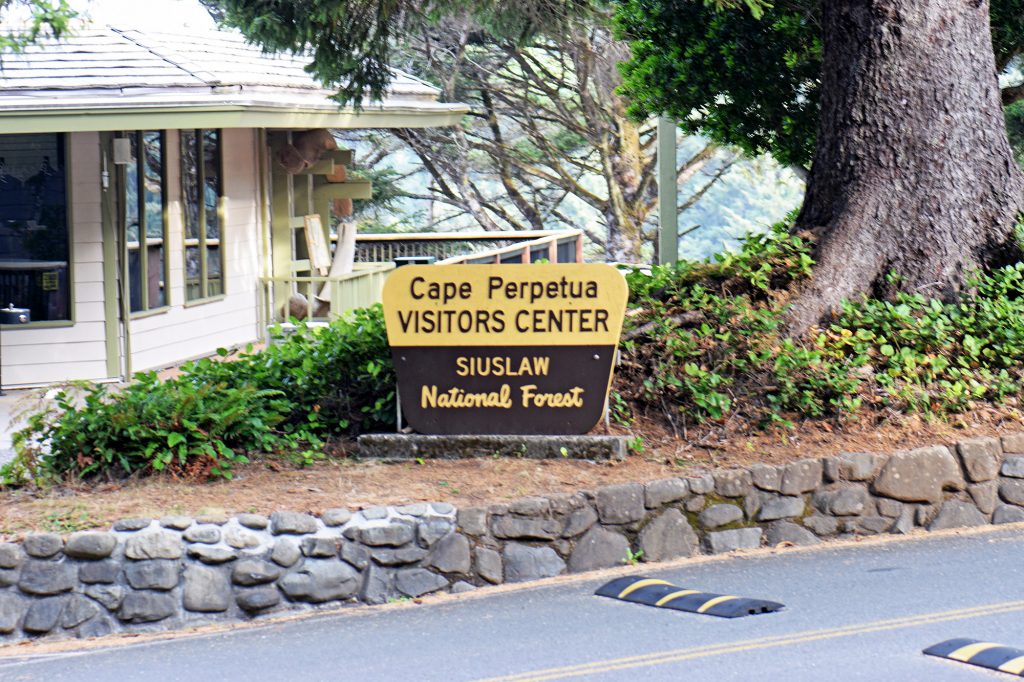
On the Oregon Coast, sandy shores alternate with rocky tide pools. Cape Perpetua is a popular destination with a tourist center, interpretive signs, and volunteers.
These are two different views of the tidal pools and their organisms.
From standing height, sea anemones are visible in this tide pool. Anenome are classified in Phylum _____ and have stinging cells called ___________.
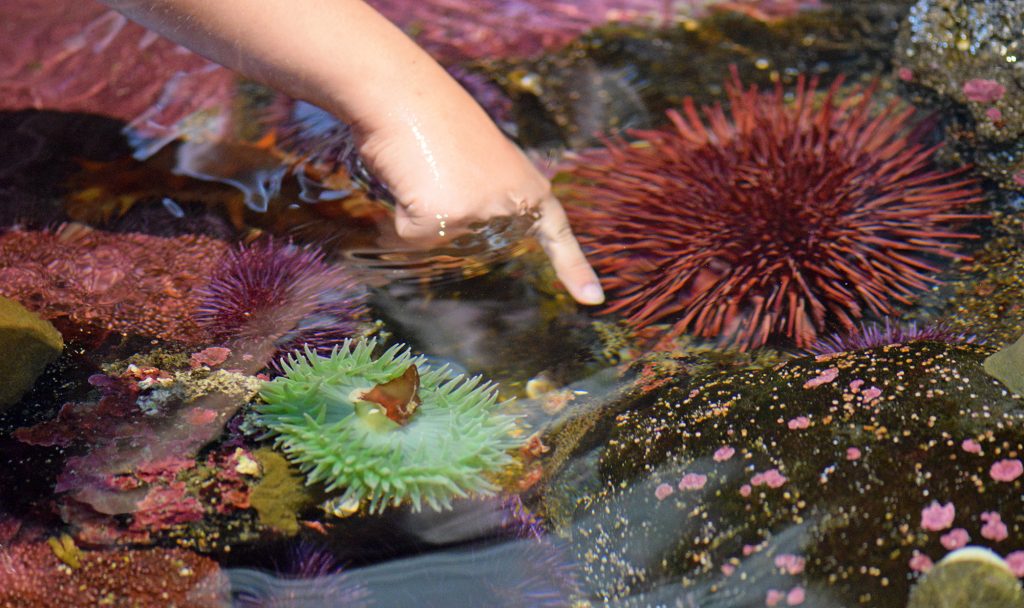
The urchin to the right of the hand is classified in Phylum _____. Species in this taxa have _____ skin.
Phylum Cnidaria
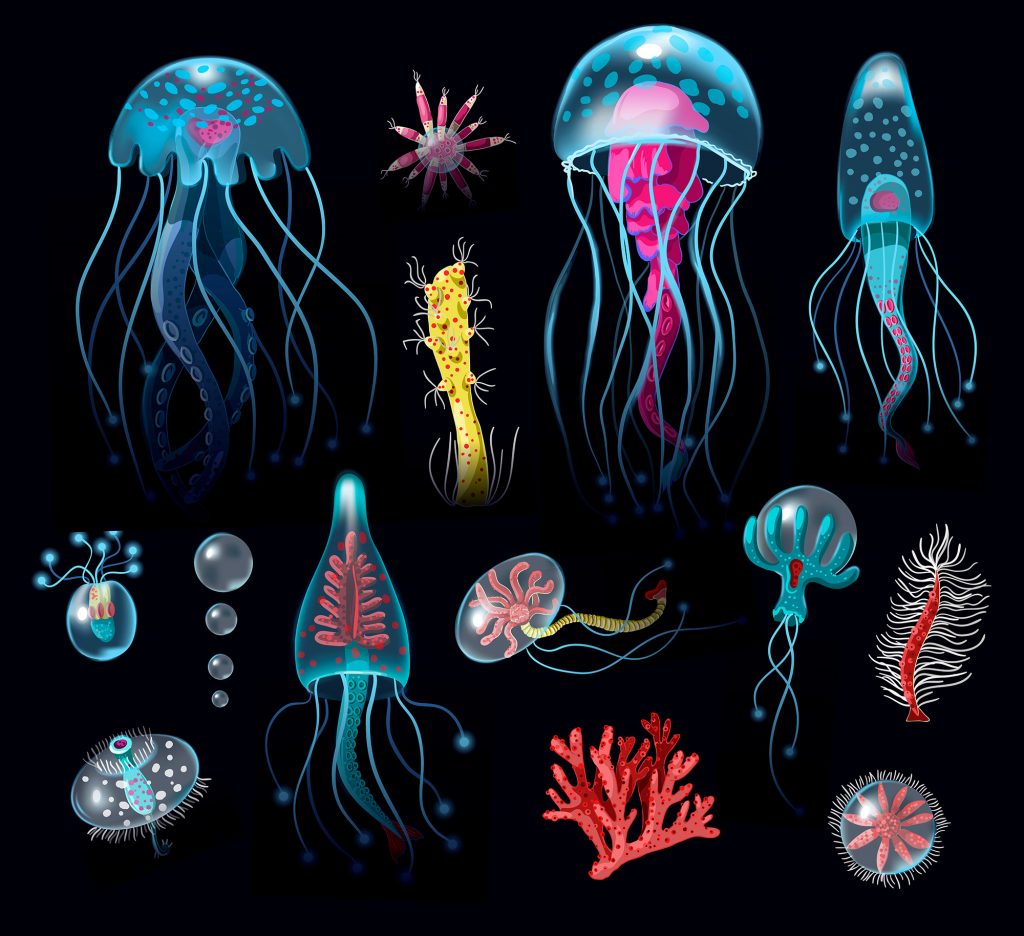
Phylum Cnidaria includes many well-known marine invertebrate species, including jellyfish, corals, and anemone.
Cnidarians have stinging cells called cnidocytes that have a trigger and a barbed hair-like extension than can inject toxins into potential prey.
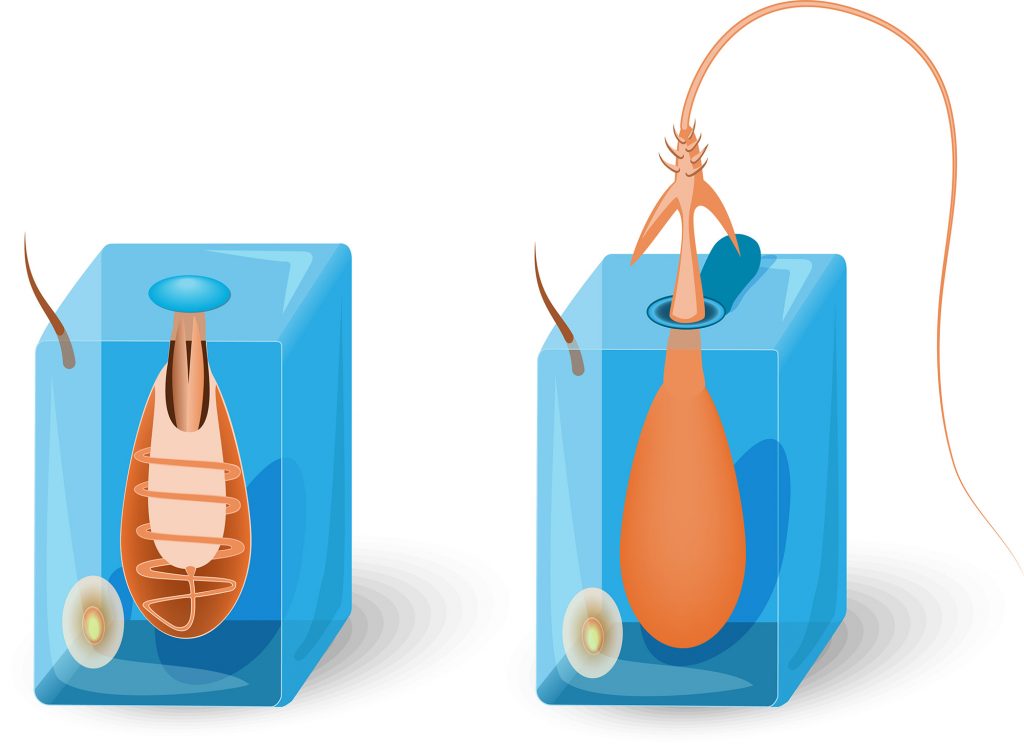
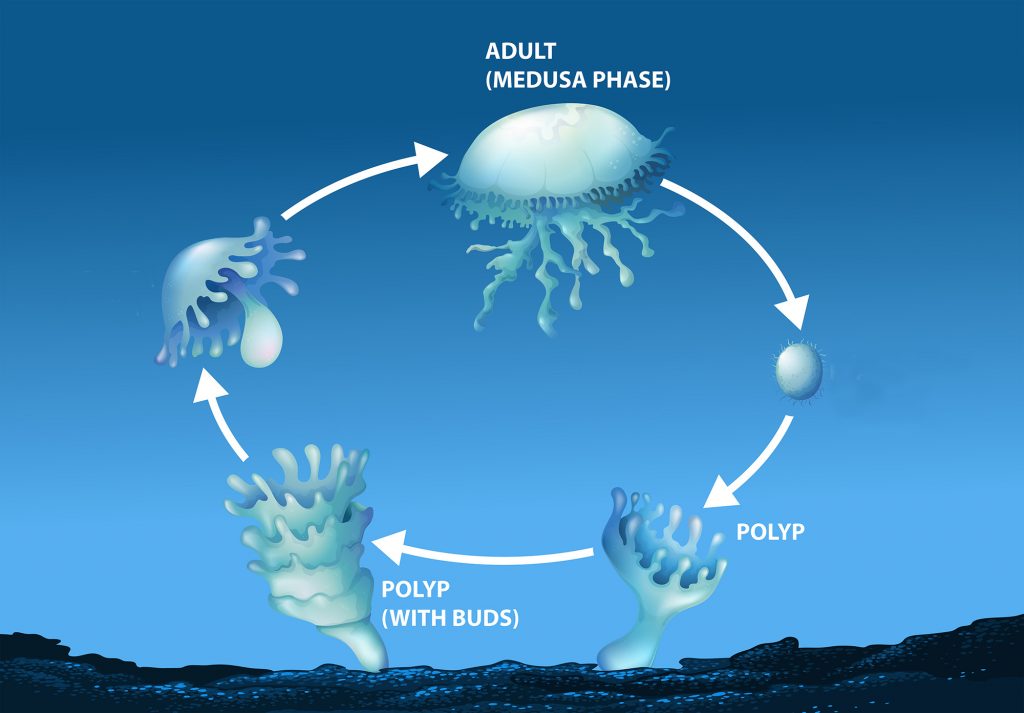
Many cnidarians have a polyp life stage when they are attached to a surface and a free-floating or swimming medusa stage where the body is shaped like a bell with trailing tentacles.
Jellyfish
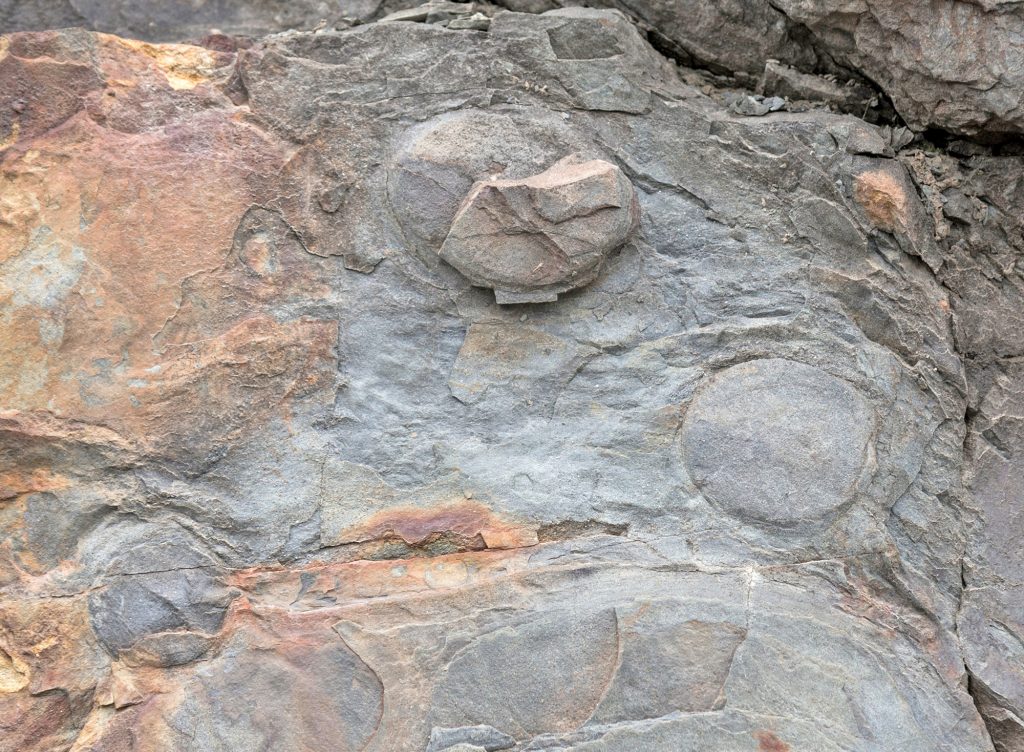
Jellyfish are believed to be the oldest taxa of animals with organs, dating back as far as 700 million years ago. Sponges, animals without organs, go a bit further back in the fossil record.
Jellyfish typically have long tentacles that can catch food flowing through the water. These “upside down” jellyfish (Cassiopeia xamachana) lay bell side down in the sand and catch small organisms out of the water. Their tentacles have endosymbiotic zooxanthellae, and they orient them towards sunlight. The jellyfish get sugars, and the zooxanthellae get shelter and some nutrients from the jellyfish. Both species benefit, so this is an example of a _____ symbiotic relationship.
A group of jellyfish filtering water for food and pointing zooxanthellae-filled tentacles up towards the light.
Corals
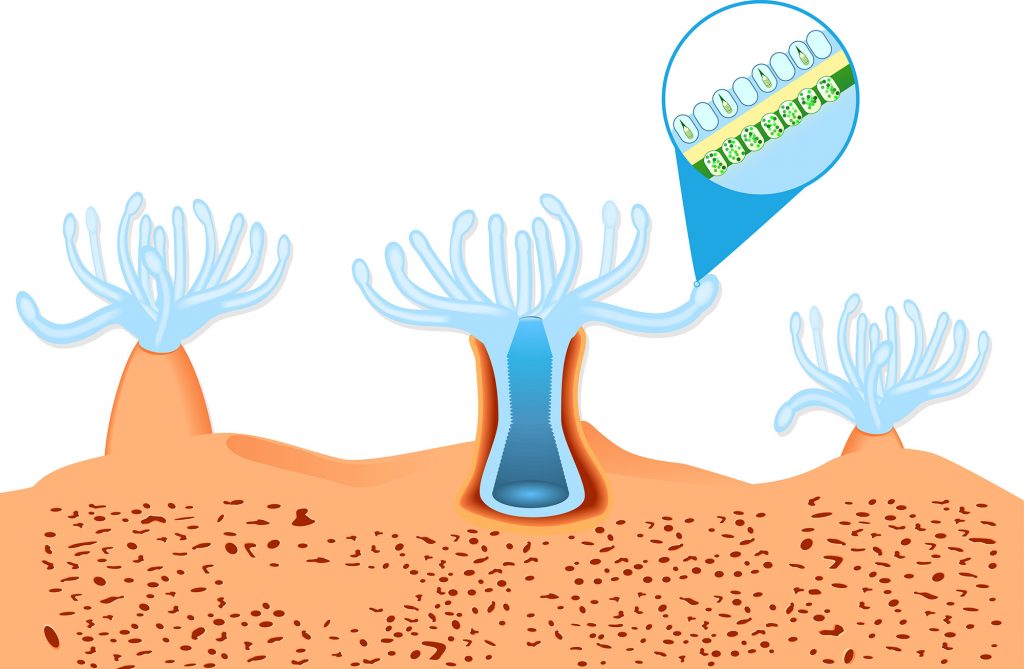
Coral animals have a critical endosymbiont: photosynthetic microorganisms called zooxanthellae.
This video introduces corals and coral reefs.
These videos show two different types of coral species. Both are a group of polyps, and each individual polyp has its own mouth and tentacles.
Anemone
Anemone often have endosymbiotic producers living in their bodies. The anenome species are found in cooler coastal waters, but resemble anemone found in warmer coral reefs.
This touch pool at the Hatfield Marine Science Center in Newport, Oregon is a comfortable way to study and make media about anemone.
This demonstrates a way to make a mediated experience more modal: gently handling an organism and describing the process.
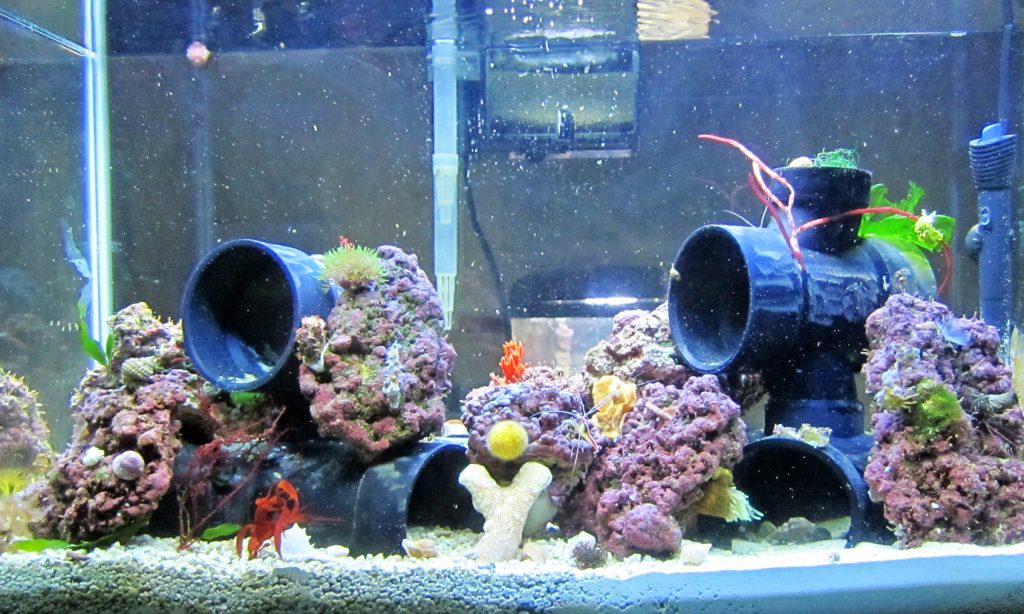
When people set up a saltwater aquarium, it is usually warm water and stocked with animals found in coral reefs, including a variety of invertebrates. This tank was set up about 18 months ago with coral taken from other tanks, what is called “live rock.” It speeds up colonization of organisms in the tank, including the bacteria necessary for nutrient cycling. Many “hitchhiker” invertebrate animals arrive on these rocks.
For this guide’s media piece, you will be observing the invertebrates that now populate this tank.
Start Your Guide 7B Media Assignment here
Marine Invertebrate Observations
When we head to aquaria or marine destinations, it is often easier to focus on the large vertebrate animals. For this media piece you will be focusing in on the smallest animals that make up the vast bulk of marine animals.
From the videos provided below, find five different invertebrate animals.
-
provide the letter of the video you found the animal in (a, b, c, d, e, and/or f). You can use all of the videos or just a few.
-
include notes on the animal, this could be a loose sketch and/or written notes.
-
identify the phylum the animal is classified in and the most likely common name. For example: you may find a brittlestar classified in Phylum Echinodermata. We have provided a photo guide below to assist with identification.
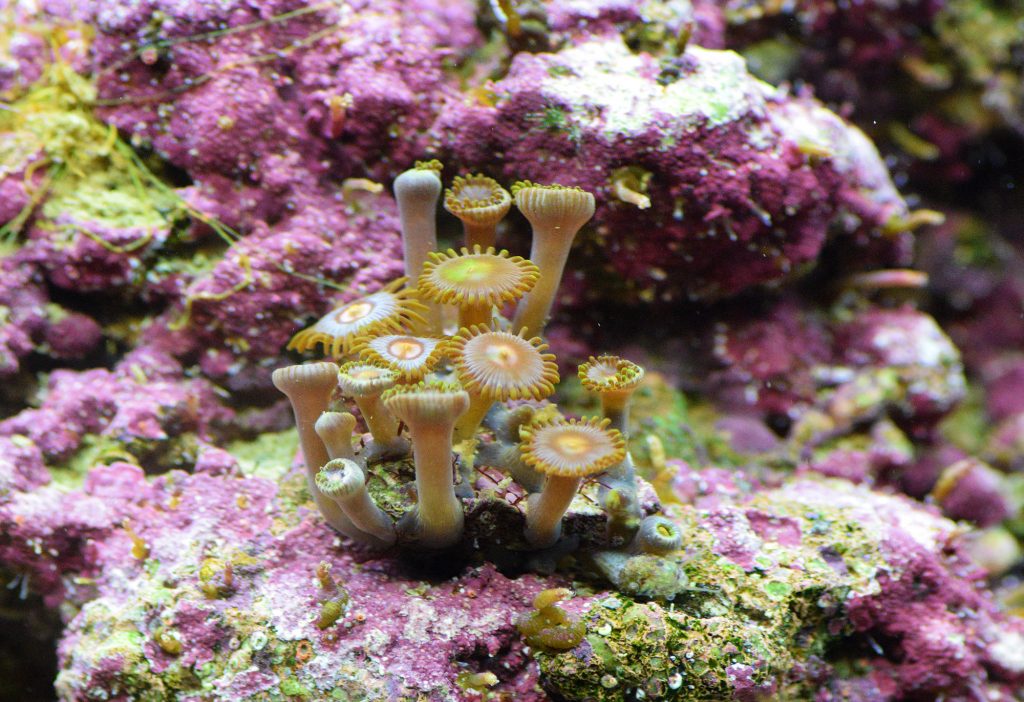
To summarize, you are submitting an identification of five different types (species) of marine organisms you find in the videos, including (a) the letter of the video it was in, (b) brief notes, and (c) its Phylum and common name.
In addition to the Phylum information that was earlier on this page, you can use the key below to assist with identification.
These are a few of the species we’ve found in the tank, organized by Phylum.
These are the videos you are using for the media piece. Each video was taken in a different part of the tank.
You are looking for and identifying five different invertebrate animals. There are multiple species in each video.
You may want to expand each video and it may take a few minutes to see the animals.
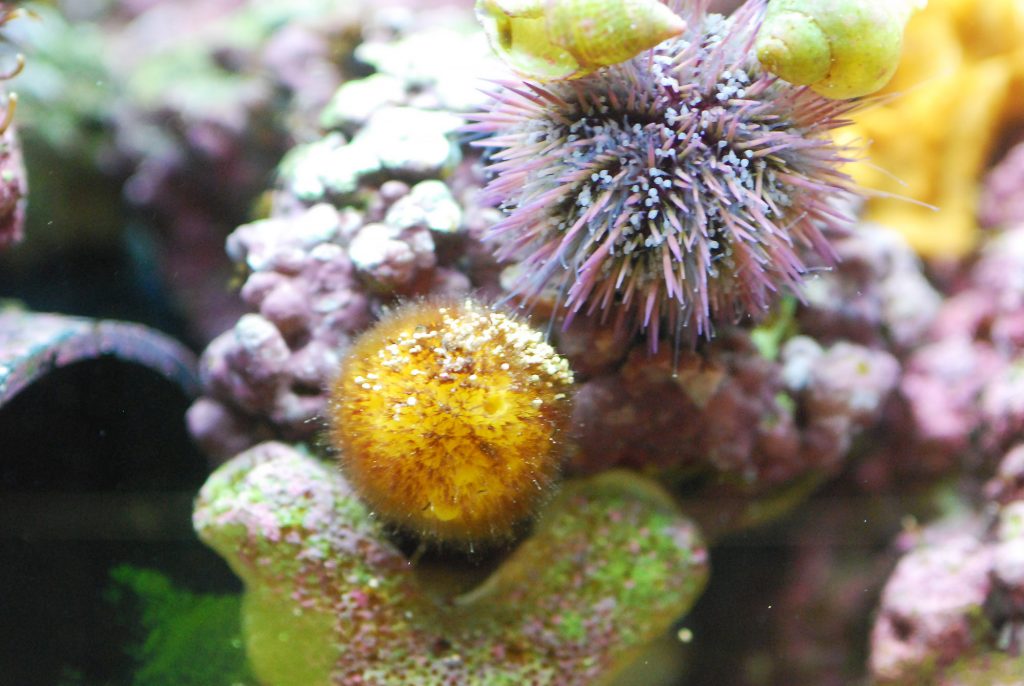
The tank in these videos is 18 months old. It was stocked with “live rock” from other tanks and a variety of small corals.
Tank Parameters:
-
30 gallons,
-
77 degrees Fahrenheit
-
10% water change weekly
-
Food added: phytoplankton for corals & pellets for clownfish and shrimp
If you are interested in additional information on marine invertebrates, we have included more on this guide’s resource page.
This is the end of Guide 7B. Please proceed to the product page.

Check your knowledge. Can you:
-
list examples of organisms in several marine invertebrate phyla, including their distinct structures and behaviors?
-
summarize the structural characteristics, representative organisms, and ecosystem significance of cnidarian species?
